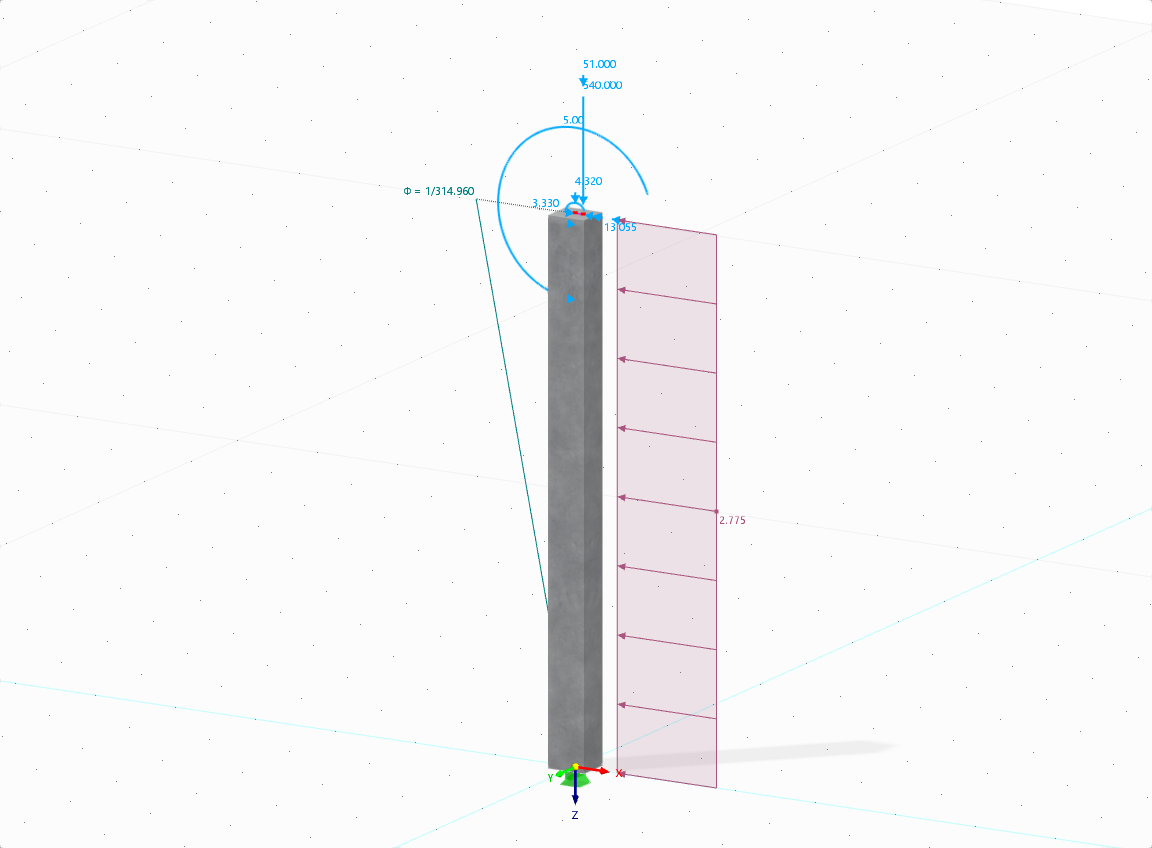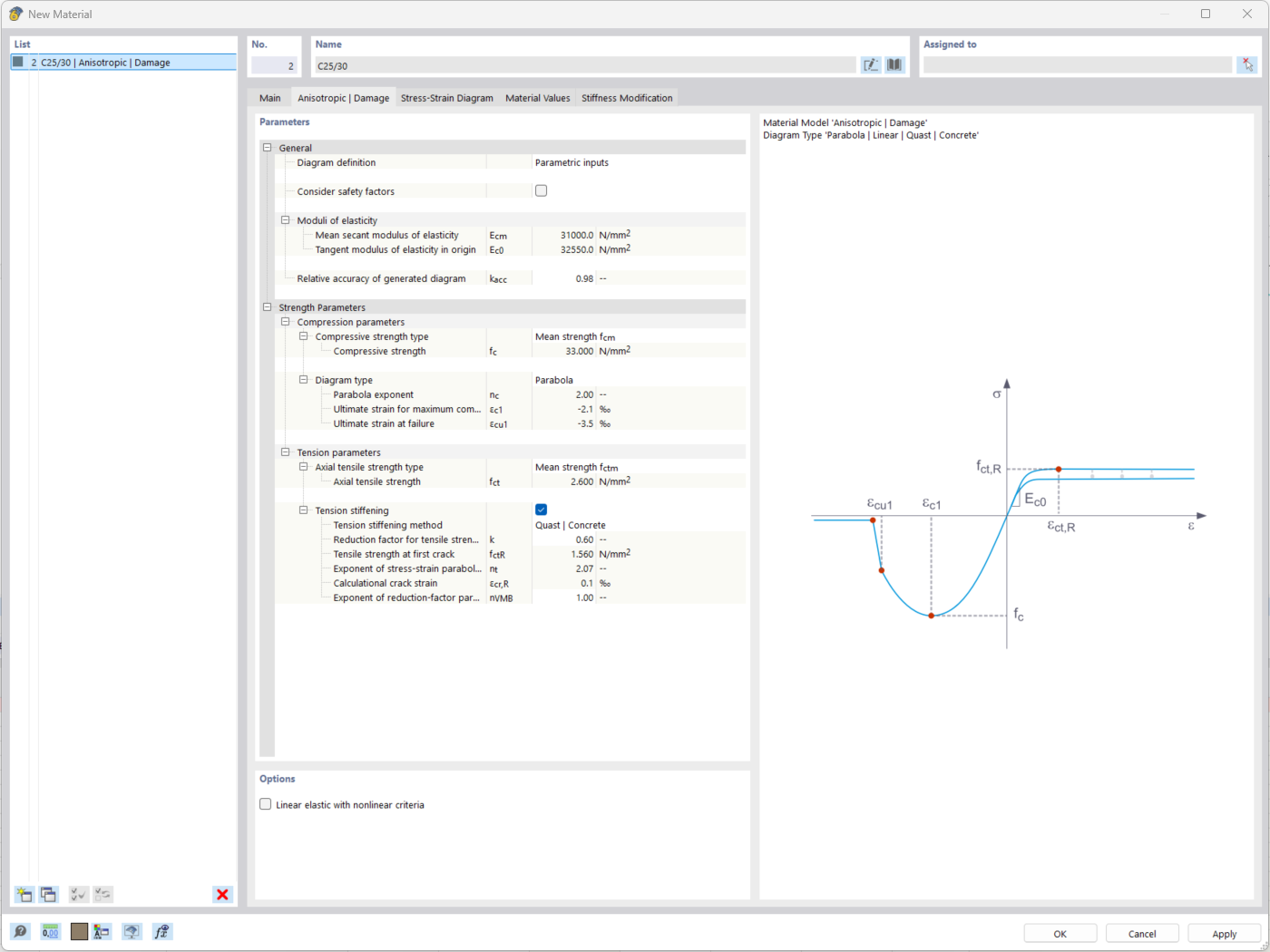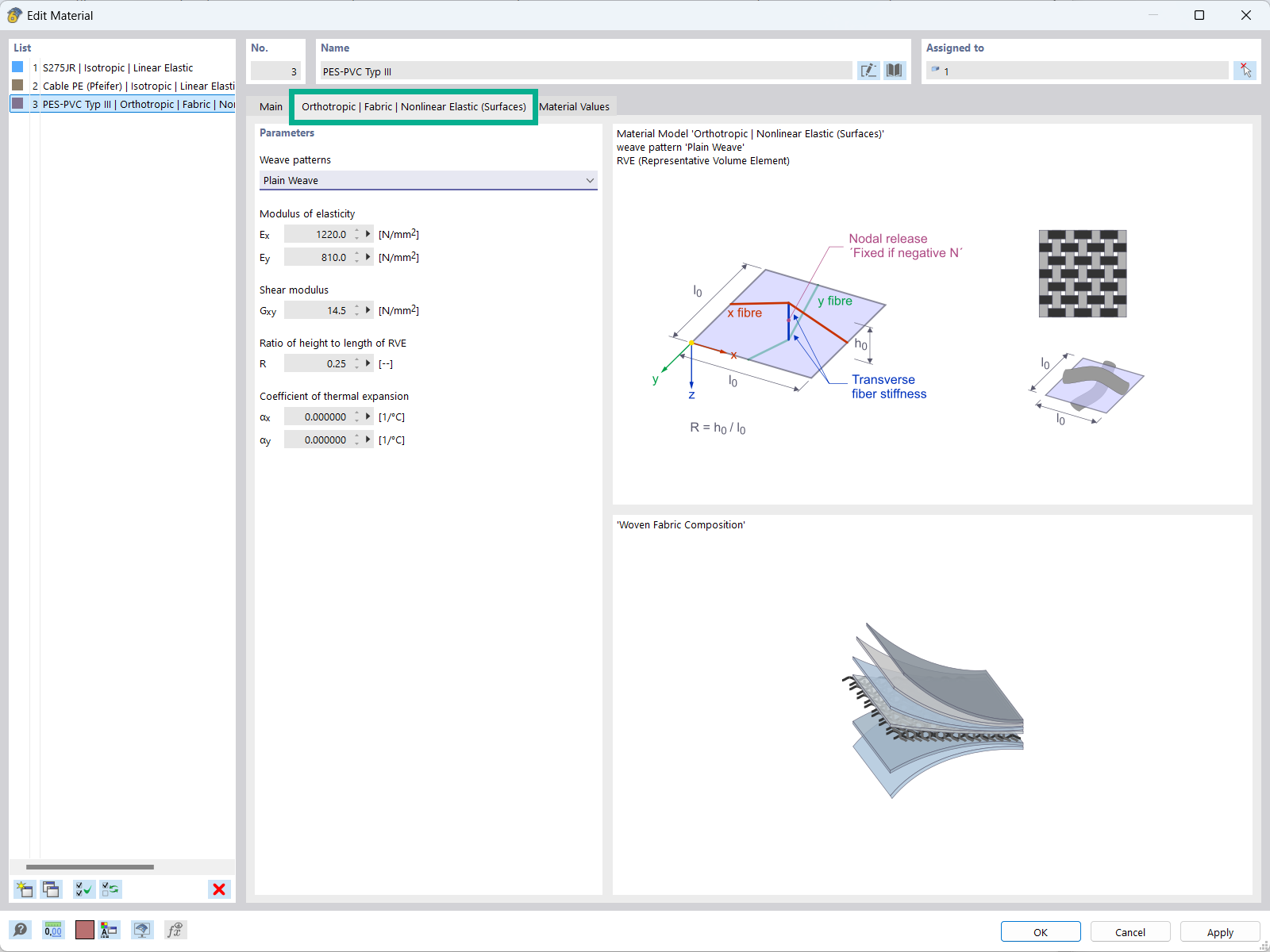Question:
I have modeled a steel plate resting on a concrete slab. The steel plate deforms through the concrete slab. If I add a surface foundation to the steel plate, the concrete slab is not subjected to any load.
How can I create a contact between the steel plate and the concrete slab? How can I model lifting for tension?
Answer:
If the surfaces are not connected to each other (using surfaces or members), they can deform "into each other". The collision or contact of the disconnected elements cannot be taken into account in the calculation.
By inserting the surface foundation, the steel plate is held globally. Since there is no connection to the concrete slab, no internal forces are transferred to it.
It is, therefore, necessary to connect the two surfaces to each other. This can be done using surfaces or members.
In order to enable lifting under tension, it is possible to create a contact solid that connects both surfaces.
In addition to the failure under compression or tension forces, the Contact Solid option allows you to define additional properties. These include, for example, different friction coefficients of the surface among each other.
An example of such modeling can be seen in the attached images. In this case, an end plate was coupled to the floor slab by means of a contact solid (failure under tension). The tensile forces are transferred to the concrete slab by means of anchors.
The contact problem can be modeled in RFEM. A solid is created between the concrete and the steel plate. The solid has the Contact property.
For the contact, you can define nonlinear properties perpendicular and parallel to the plate plane.




























.png?mw=512&hash=57a05dc9f33b1949836c96669cadcdc6332b64e5)
